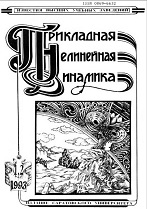|
This article is cited in 1 scientific paper (total in 1 paper)
APPLIED PROBLEMS OF NONLINEAR OSCILLATION AND WAVE THEORY
Chaos and order in atmosheric dynamics. Part 3. Predictability of El Niño
N. V. Vakulenko, I. V. Serykh, D. M. Sonechkin
P. P. Shirshov Institute of Oceanology, Russian Academy of Sciences
Abstract:
Topic. Based on the assumption that short-term climatic variations are nonchaotic, and, therefore, the paradigm of the limited predictability of weather formulated by E.N. Lorenz is not applicable to these variations, a question is posed about the unlimited predictability of the short-term climatic variations. It differs from the opinion generally accepted in climatology now that atmospheric motions of all time scales, beginning from daily weather variations, and including interannual, centennial and even millennial variations of climate are unstable. Aim. Specifically, the interannual scales are considered in this paper, and the predictability of the well-known phenomenon of El Niño is investigated. For this purpose, the so-called Global Atmospheric Oscillation (GAO) is considered which has been recently recognized by climatologists. GAO represents a synchronized integrity of the well-known processes in tropics connected with El Niño, and some extratropical processes. Method. Assuming GAO to be the main mode of the short-term climatic variations, some indices are defined which characterize the dynamics of GAO itself as well as the interrelations between the extratropical and tropical components of GAO with each other. It turns out that crosscorrelations exist between these indices which are so high that they may be considered as evidences of some oneto- one relationships between the tropical and the extratropical components of GAO. Results. It allows give a positive answer to the question posed on nonchaoticity of the short-term climatic variations. Among the indices characterizing GAO there is one by means of which it is possible to predict El Niño with the lead time of 14 months. Then, by means of a specially designed technique of the crosswavelet analysis of pairs of time series, a range of time scales is found in which the closest crosscorrelations exist of the index-predictor with an index characterizing El Niño itself. This time scale range includes within itself all known El Niño rhythms, i.e. the time periods from 2 to about 16 years. Discussion. As a result, it is indicated a possibility of a further increase in the lead time of the of El Niño prediction up to several years. It is much more, than the lead times of all present-day hydrodynamical and statistical forecasts of El Niño.
Keywords:
nonchaotic short-term climatic variations, wavelet analysis, predictability of El Niño.
Received: 02.03.2018
Citation:
N. V. Vakulenko, I. V. Serykh, D. M. Sonechkin, “Chaos and order in atmosheric dynamics. Part 3. Predictability of El Niño”, Izvestiya VUZ. Applied Nonlinear Dynamics, 26:4 (2018), 75–94
Linking options:
https://www.mathnet.ru/eng/ivp90 https://www.mathnet.ru/eng/ivp/v26/i4/p75
|

| Statistics & downloads: |
| Abstract page: | 128 | | Full-text PDF : | 34 |
|




 Contact us:
Contact us: Terms of Use
Terms of Use
 Registration to the website
Registration to the website Logotypes
Logotypes








 Citation in format
Citation in format 
